Samsung Galaxy Note 9 hands-on: More of everything!

It is August, and Samsung is staying true to its typical release cycle by announcing a NOTE-worthy successor to one of its biggest devices. Of course, that's the Galaxy Note 9, and we had the chance to spend a few quick minutes with it before the official announcement. So, what did Samsung do better this time around? Has the fingerprint scanner been moved? Did it go in-display? Is the S Pen any cooler?? WHAT ABOUT THE PRICE!?! Ok, ok! Enough teasing – let’s find out!
Design
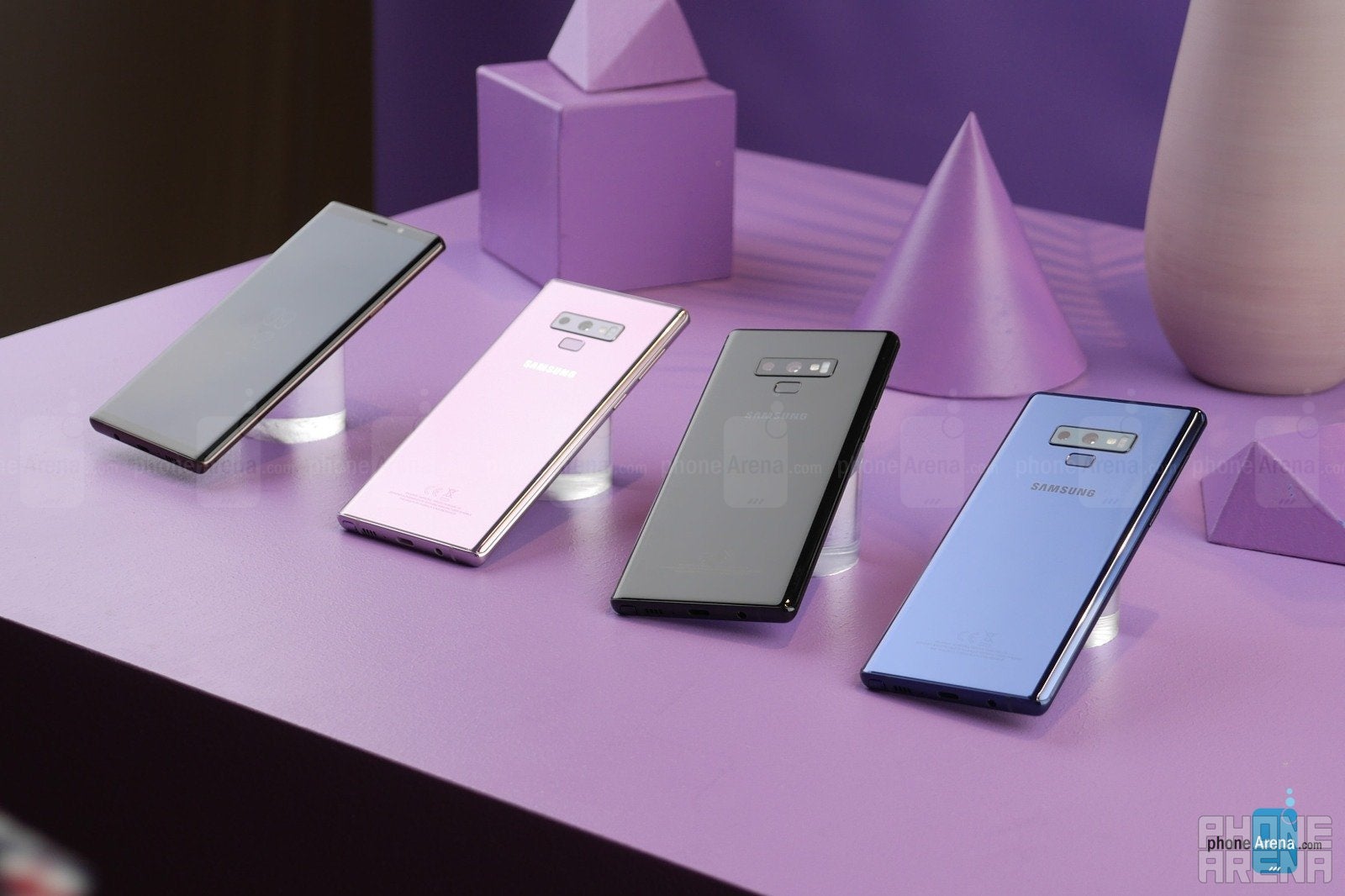
The Samsung Galaxy Note 9 predictably looks a lot like its predecessor. Samsung has been making extremely sleek, IP-68 water-resistant phones – with minimal bezels and no notch – for a couple years now and that trend doesn’t change with the Galaxy Note 9. From the front, it’ll be pretty hard to tell a difference from the Note 8, but Samsung did slim down the bezels a bit more and diamond cut the metal frame on the Note 9 to make the edges shimmer and stand out.
Turning around the Note 9, you’ll find the more obvious differences in the rearrangement of the fingerprint sensor – now located under the camera instead of beside it – and the flash and sensors now spread horizontally, taking up the extra space from where the biometrics used to lay. There was little to complain about with the Note 8’s design, except for the odd fingerprint sensor placement, of course, which Samsung has remedied with the Note 9, all while making the phone itself just a wee bit sleeker.
Display
It’s pretty plain to see that the Note 9 doesn’t change much in the display department. It does measure in at 6.4 inches now compared to the Note 8’s 6.3 and as such carries a slightly lower 516ppi (versus 522ppi on the Note 8), but other than that, this Quad HD+ (2960x1440 px) Super AMOLED display is just about what we got last year and looks just as vibrant and sharp as ever.
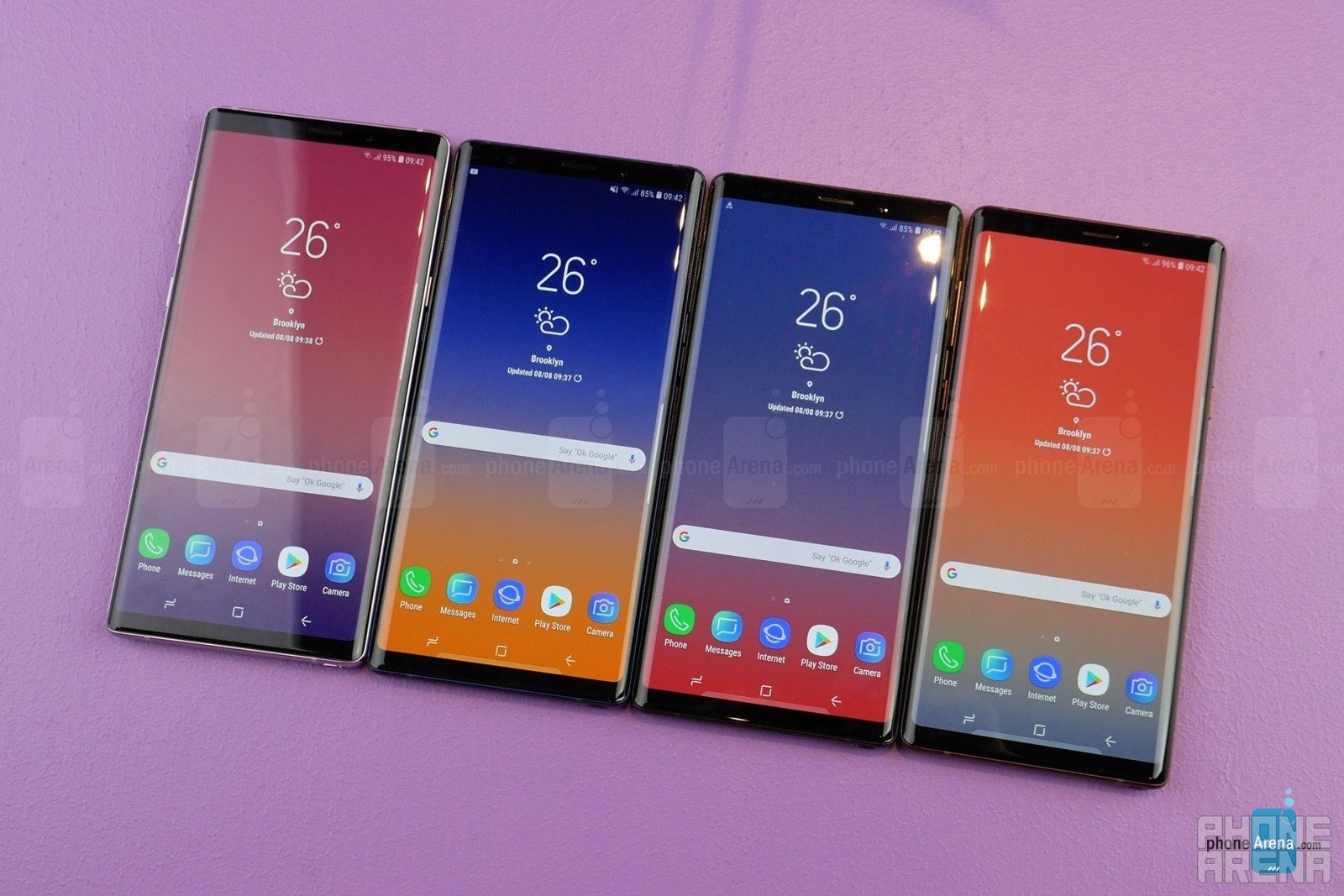
User Interface and S Pen
Built on Android 8.1 Oreo, the Samsung Experience remains a worthy alternative to the increasingly minimalized UX’s offered by other manufacturers – even as “stock” Android grows more feature-rich in its own right. Still, Samsung continues to offer new, interesting experiences like AR Emoji, which was first introduced in the Galaxy S9.
Of course, the S Pen offers its own unique experience, and according to Samsung’s polling, it’s the number one reason why Note owners purchase the device. Since its introduction on the first Galaxy Note, the S Pen has traditionally been a fun and useful tool which sets the Note devices apart. Along the way it’s added some neat features such as live messages and screen-off memos.
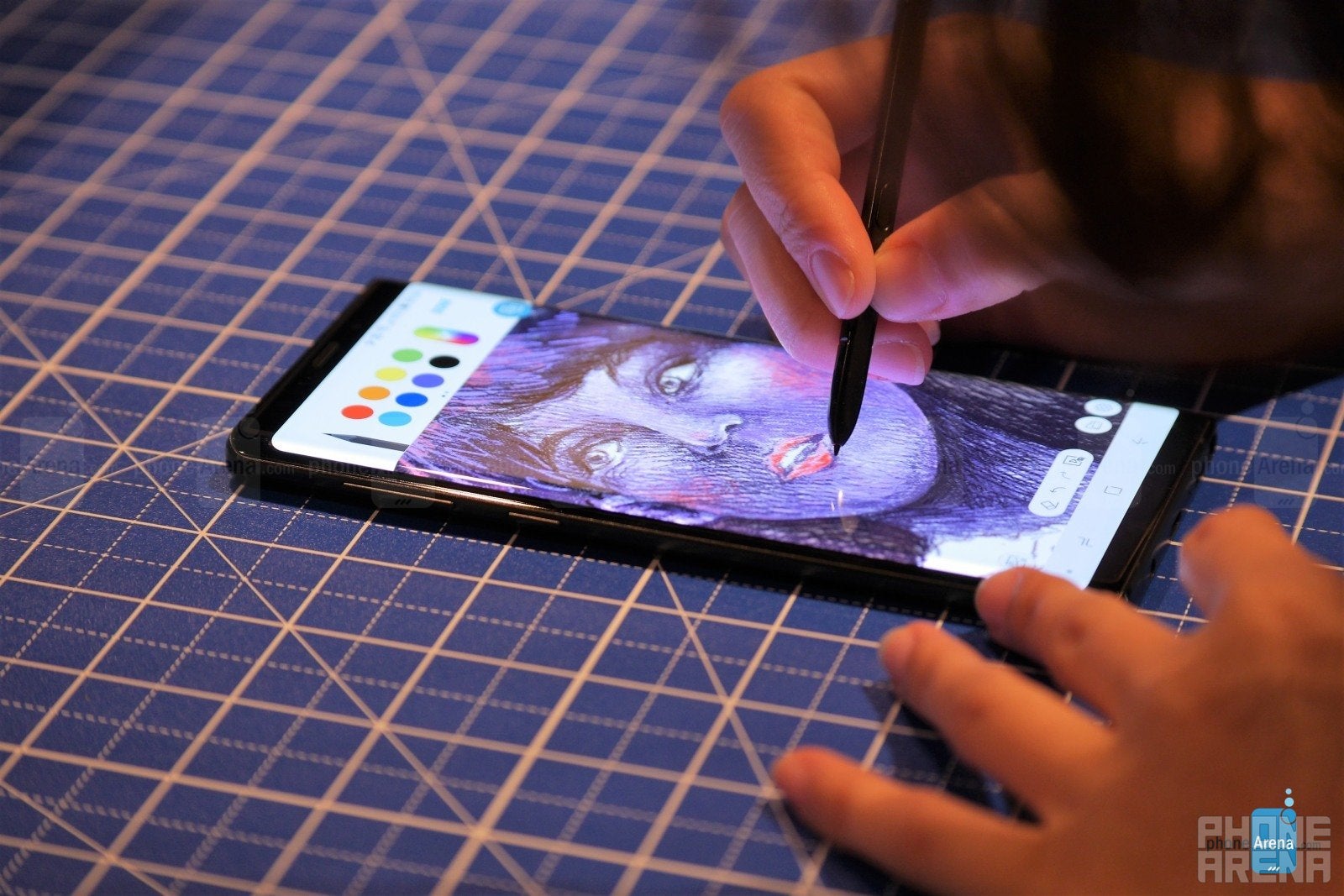
Entirely new to the S Pen, though, is a Bluetooth LE (low energy) module which allows the digital pen to be used as a remote for controlling YouTube playback, scrolling through your photo gallery, or taking pictures with the front or rear cameras – all from up to 10 meters away from your phone. Long, single, and double-presses on the S Pen’s S-Button elicit specific responses, as in the case of YouTube where a single click pauses or plays the video, and a double-click skips to the next video. Samsung’s also releasing the SDK for this function so that any app makers who’d like to utilize this functionality in their app can do so. Not only is this a fun and slick way to interact with your device but the S Pen’s ability to charge for 40 seconds and produce a half-hour of usage also proves that Samsung had productivity in mind for this peripheral, as well.
Speaking of peripherals, you will also no longer need a DeX dock to utilize this shape-shifting function. Instead, only a USB Type-C to HDMI cable is needed to use the Note 9 as a DeX hub, capable of not just running the UI but controlling it too, as either the “touchpad” mouse or a complementary notepad during use.
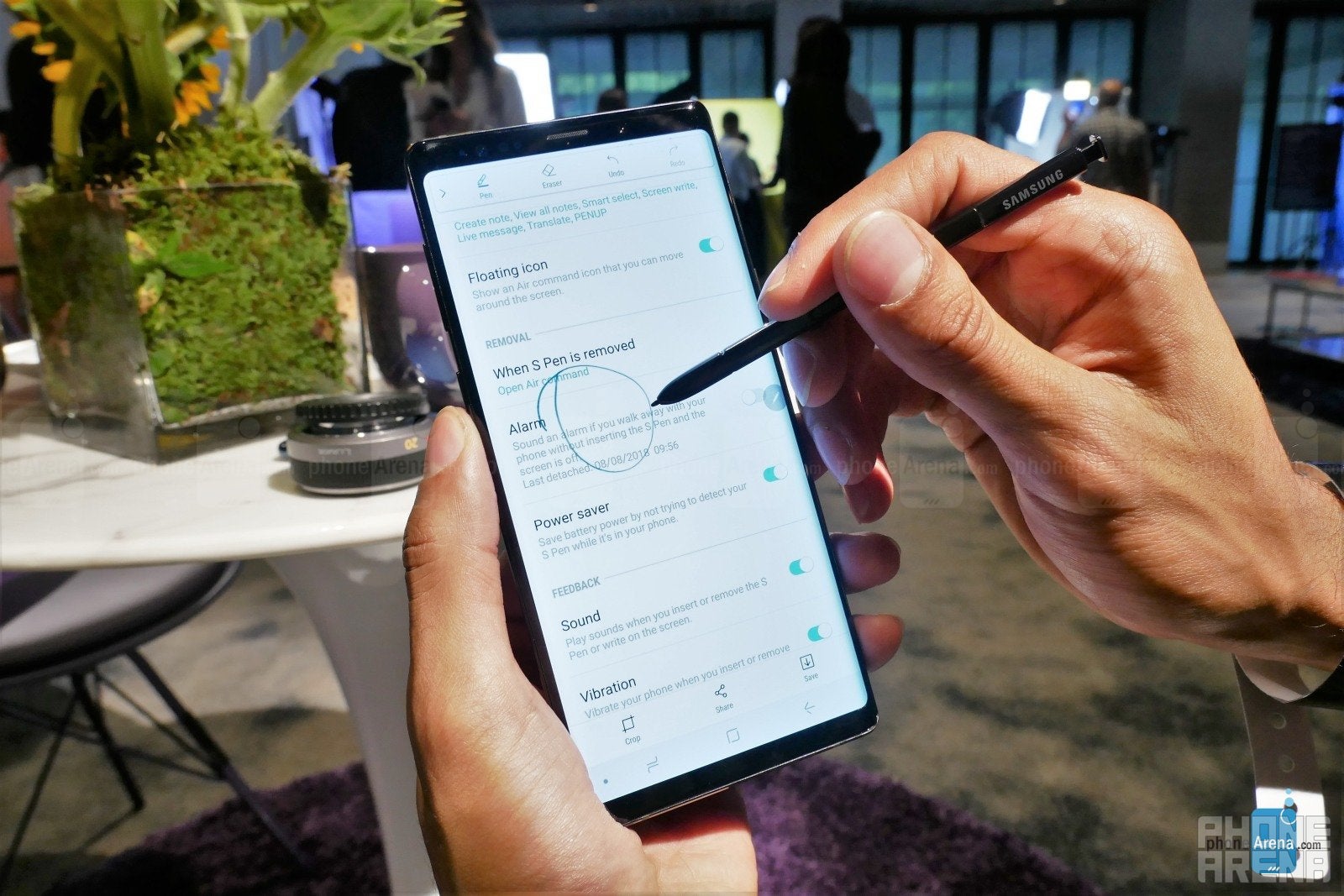
Performance, Processor, and Memory
The interface on the Galaxy Note 9 feels smooth and light, despite its bolstered functionalities. This is a testament not only to Samsung’s software prowess but also to the top-of-the-line internals running it. As always, the U.S. will get the Snapdragon-toting version of the Galaxy Note 9, while internationally Samsung’s home-brewed Exynos-powered variant will be offered. Stateside, the base configuration will include the Snapdragon 845 paired with 6 gigs of RAM and 128 GB storage with up to 512GB of expandable storage via MicroSD, while the same setup will be offered abroad with the Exynos 9810 in lieu of Qualcomm’s silicon. The next step up will add 2 gigs of RAM and quadruple the storage, making 8 gig RAM and 512 GB storage the alternative – a first in the Note’s history. Yes, pop in a 512GB microSD card in this bad boy, and what you got there will be 1 terabyte of total storage space.
Camera
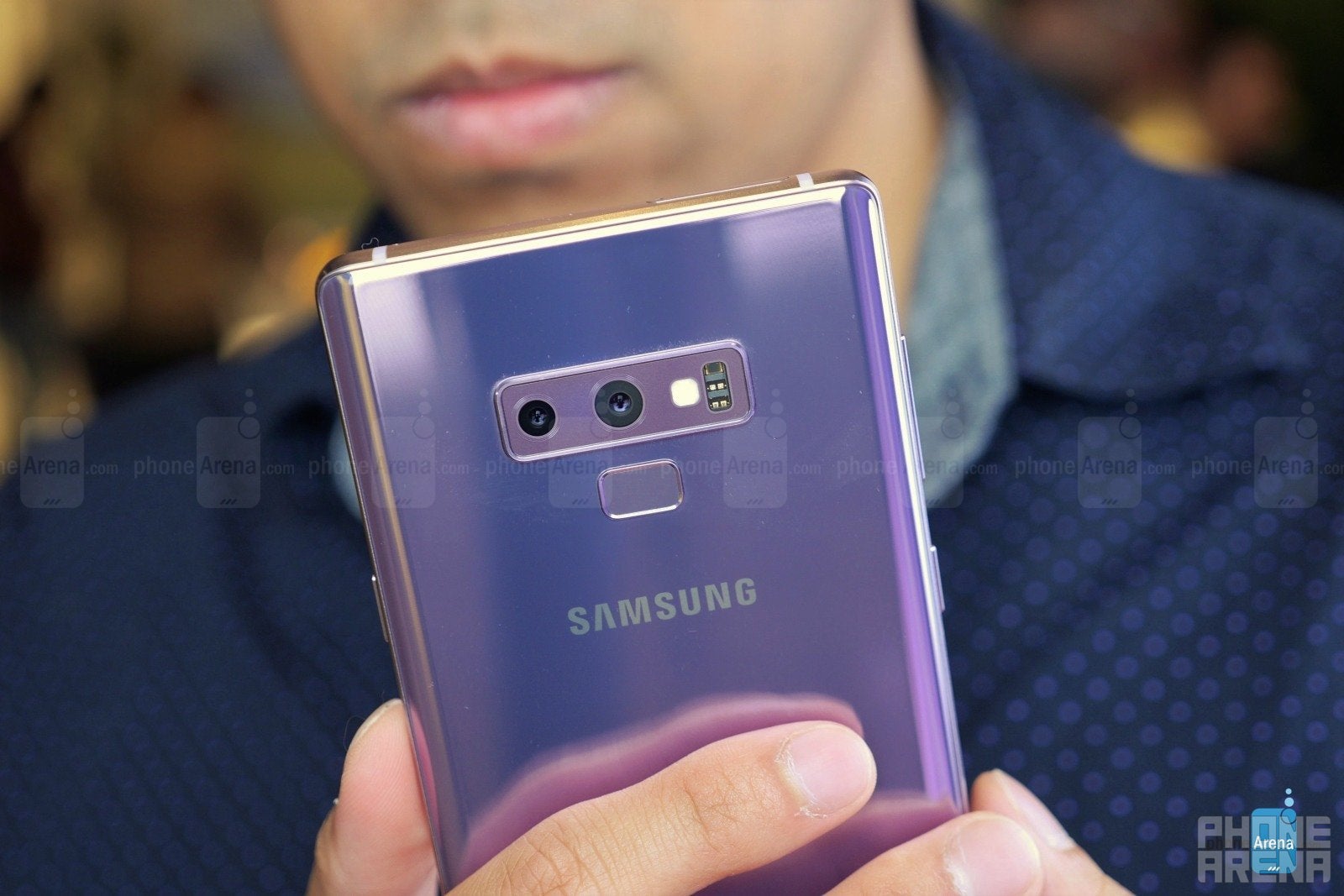
Samsung’s opted to stick with the optically-stabilized, 12 MP telephoto and 12 MP wide-angle dual-camera setup on the Galaxy Note 9, but there is one particular hardware change to note. The Note 9 adds variable aperture to the wide-angle camera for better performance in high- and low-light situations – f/2.4 and f/1.5, just as we’d seen on the Galaxy S9+.
Software within the camera app is where the Galaxy Note 9 has done the most expanding. First on the menu is Scene Optimizer. This is a shooting mode which uses scene recognition to better capture particular shots. What other companies have started calling “AI” these days. Currently, 20 different scenes are recognized, and optimizations can include punching up certain colors or even changing shutter speed.
Battery
We’re happy to report that the battery on the Galaxy Note 9 is larger than that of the Note 8 – 21% bigger, to be exact – rounding out at a full 4,000 mAh. Being one of the few areas of opportunity we found with the Galaxy Note 8, we’re certainly hoping that, in this instance, bigger translates to better.
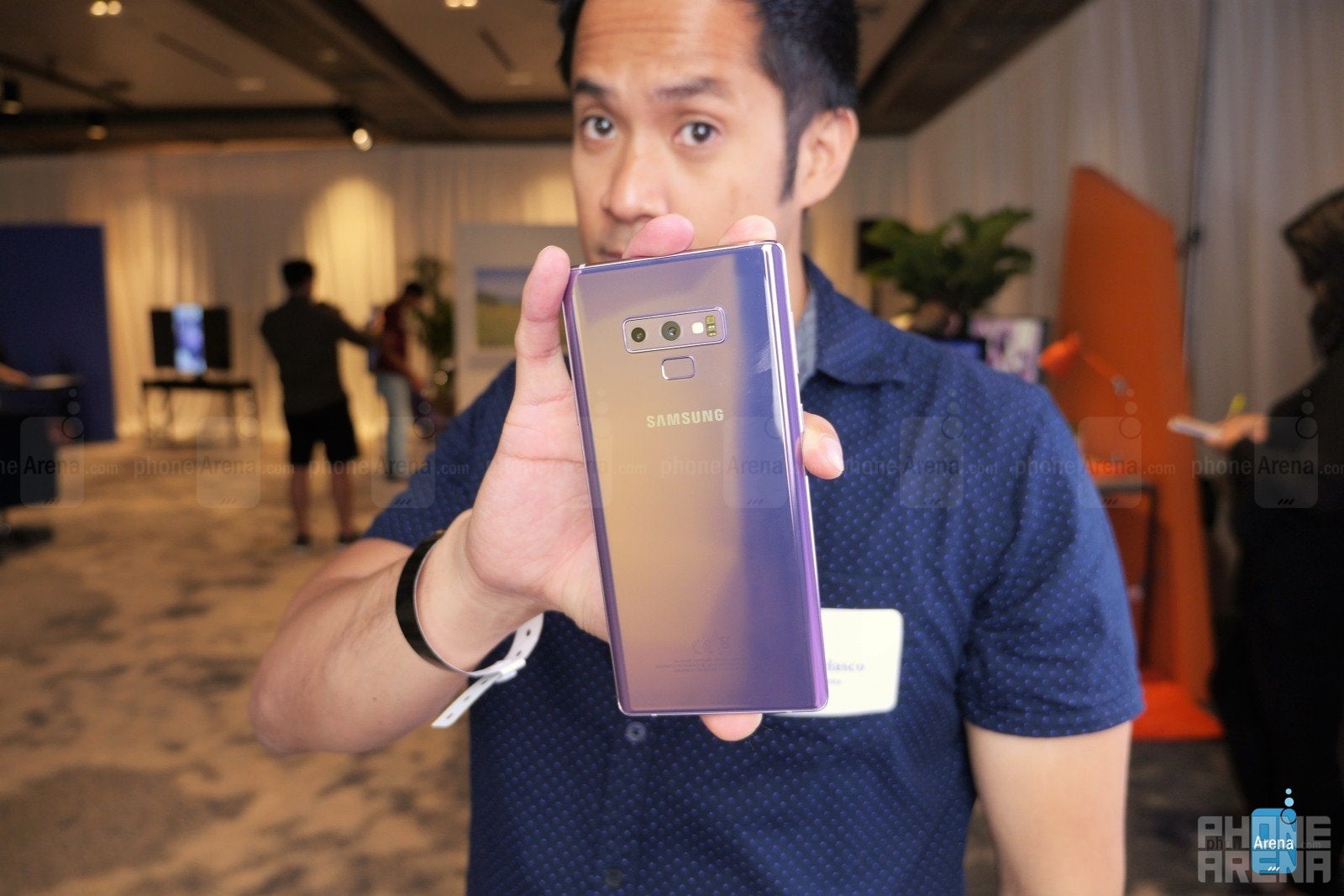
Expectations
The Galaxy Note 9 doesn’t have a very tough task before it. This is much unlike the Galaxy Note 8 whose job it was to make us forget the infamous inferno the Note 7 went up in the year previous. The Note 8 succeeded, though, and the only complaint we had about the battery was “give us more of it.” And on this request Samsung has delivered. The jury’s still out on efficiency, especially with the Snapdragon and Exynos-based variants, but we’re hopeful that the 21% increase makes a notable impact.
Storage still counts as hardware too, and starting with 128 GB storage for the base $1000 version is a really nice perk, especially considering the 512 GB version costs $1250.

Then, of course, you have incremental additions to software like that of the S Pen and its expanded capabilities as not just a writing utensil, but a remote control for your device.
Lastly, there’s the camera, which throws in the variable aperture we saw on the Galaxy S9 and adds scene recognizing optimization, as well as the ability to pick out flaws in certain shots and suggest you retake them.
Stay tuned for our in-depth comparisons and full review on the Galaxy Note 9, as we, and the rest of the world find out if any device can knock the Galaxy Note 9 off of its top spot.
The Galaxy Note 9 comes in Midnight Black, Ocean Blue (with a yellow S Pen), and Lavender Pureple. Pre-orders start August 10, and devices will ship on August 24.
Follow us on Google News











Things that are NOT allowed:
To help keep our community safe and free from spam, we apply temporary limits to newly created accounts: